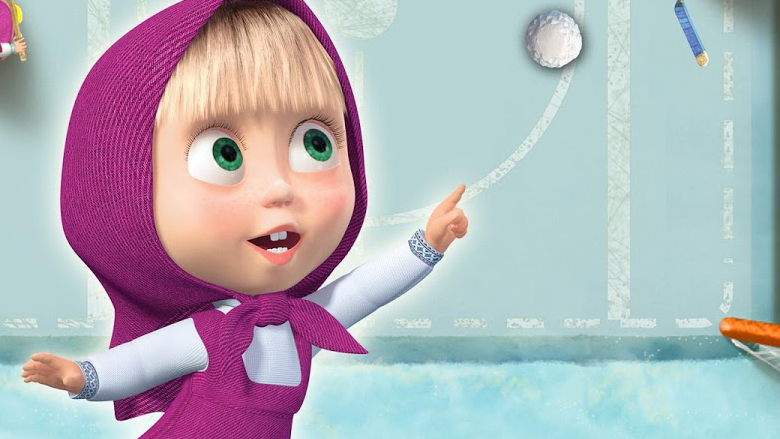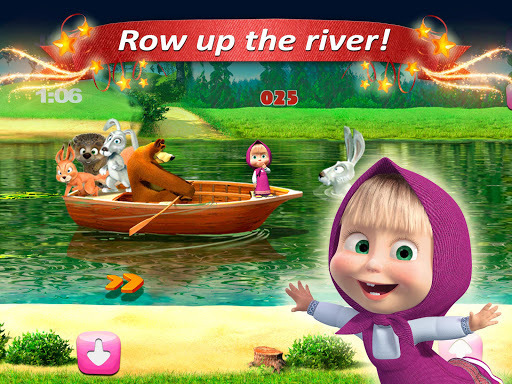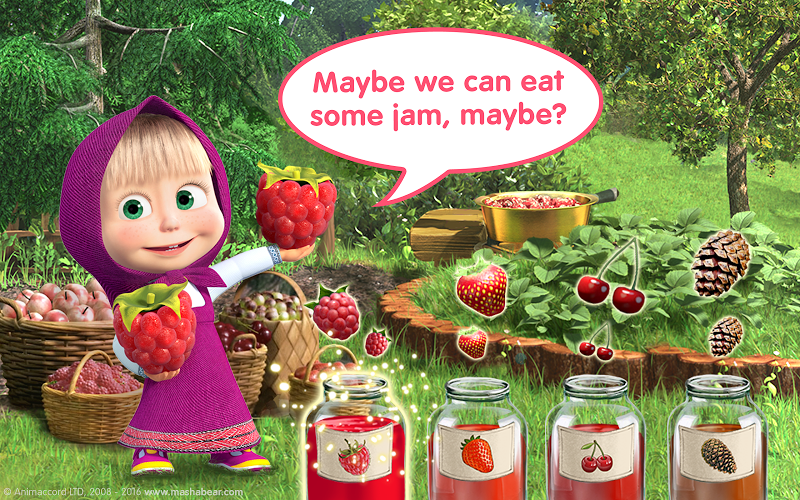Recently Indigo Kids released an update to their mobile game “Masha and the Bear: Kids games”. The release turned out to be a great chance for us to discuss games for children with Maksim Kochurin, a Project Manager at Indigo Kids.


Maksim Kochurin
The companies developing applications for children don’t have impressive revenues, on payback level in the best scenario. Why don’t they switch to adult gamedev?
The thing is that many companies don’t present themselves right, sticking to development as the main aspect of the game creation.
The market of kids applications is very complicated, and not everyone understands how to adapt to it. They think that it’s enough to create something simple as the audience isn’t demanding. That where they step off.
It’s important to know that kids market is the one with thorough attention from the government’s, mobile platforms’ and parents’ side. It has a lot of its rules, so it’s easy to get confused and make mistakes.
The kids gaming market is more sophisticated than the adult one. The target audience is more differentiated here, its main aspects of behavior are unknown (the phenomenon of kids mobile gaming has just started to be observed by psychologists). Also, a lot of things depend on the age (4-year-old and 5-year-old kids react differently on the same project).

It’s possible to gain success on the market of kids applications with the right approach to the audience and product quality. The examples are not far to seek: Toca Boca, Budge Studios, MAGE, Apps Ministry, Indigo Kids.
Of course, it’s impossible to come up with Supercell developing kids applications, but it’s a great start for sure to approach the adult gamedev.
It seems that brand partnerships keep up the companies who develop for kids as it reduces marketing expenses. The problem is that it is unclear how much of success the brand brings.
There are two sides of the same coin. On the one hand, you get great organic installs, style guide, and recognition in the app stores. The name of the brand allows you to reach the top quickly and get loads of traffic. On the other hand, you have to share a considerable part of your revenue.
Downloads have to be converted into income. It’s a real challenge in kids gaming market.
There is no such thing as excessive numbers of transactions during first gaming sessions like it often happens in other games. That’s why it’s critical for a kids game to have a good retention.
The retention in kids games is one of the most important components of success. Session length in these games varies from 3 to 15 minutes, sometimes it lasts for half an hour (as you know kids get tired faster). Payments during the first gaming session are very rare. Parents have to check if their child really likes the game and is going to remember about it tomorrow.

Advertising is not an option to monetize your project: it will drive the child away immediately. Many developers ignore this fact trying to get as many installs as possible. So they are in the tops with millions of downloads, suddenly realizing that it doesn’t bring revenue. The most important thing here is the way we interact with the child in the game, whether he likes it, understands how to play, wants to continue playing tomorrow.
The issue of monetization in the children’s games is a controversial point. Is it even ethical?
It’s a hot topic. Some people consider it unethical towards kids. But you’ll never see free barbies and transformers at a real store. So what’s the difference with the virtual one? It’s the same toy, and the production of it takes time and money. So we aren’t asking ourselves to monetize or not.
We all perfectly know how a game can force a player to make a purchase. We as adults understand this. But kids are easily manipulated. So what’s the deal here? Is it forcing them to manipulate their parents?
A child goes to his parents and asks to buy the full version of the game after he played it for a while and liked it. Parents may purchase the game to keep their child occupied or if they see that this game is a learning one. Nothing wrong with that. This is not a manipulation. Parents can choose to buy it or not.
What is the percentage of paying users in kids games?
You have to understand that it’s not children who pay, it’s their parents. They pay not much and only for something trustworthy. A crazy competition out there.
If you think you can lead the child to a payment and convert it into a paying user – you’re wrong. Not going to work.
I noticed a lot of monetization options in “Masha and the Bear”: ads, in-game currency, and even purchasing the full version. Isn’t it too much?
There are several ways of monetization:
- the paid version (the easiest way, but not always profitable and not popular nowadays);
- free version with the ability to purchase the full version;
- free version with in-game currency;
- demo version where you can buy the full version (additional content);
- free version with advertising (banners, videos, etc.).
All of these variants have pros and cons.
We chose a full game with the maximum number of monetization options and minimum IAPs. In this case, the user has a choice.
The development of applications for children is a difficult and costly process, which is hard to make back. But there is always a boundary which no developer of mobile applications for children should cross. It’s an adult content in ads. We limit it in our advertising accounts. Of course,it reduces our revenue from ads, but it must be done.
Could you tell us your revenue division depending on each monetization option?
It depends on the application, country, advertising format (banner, video, etc.), profitability of the IAP, and the platform. On average, 10% -20% from the IAPs, the rest is advertising. In Russia, unfortunately, people don’t like to pay for a quality product for children. In Europe and the United States people make more purchases.
Children as a gaming audience: who they are, what they want, how their behavior differs from the adult one?
There is no such audience as children. Each age has its peculiarities, interests, psychosomatics, perception, and so on. We have to find a middle ground and aim at it. Our audience is from 3 to 7 years. Therefore, we have three levels of difficulty: 3-4 years, 5-6 years, and 7+.
If you make a game for children what things do you need to keep in mind?
Children of all ages are different. Their knowledge of counting, reading is different too. Also, they are easily distracted and get tired very fast.
The games should be very graphic, full of well-known images as children do not perceive texts. Their motility is as weak as the reaction, so objects on the screen should be larger.

However, they are very quick to learn and progress as opposed to adults. That’s why it’s important to make games with levels of difficulty.
There should be a nice voicework and interesting characters for an emotional response from a kid. If the child tapped a wrong place on the screen, the game should explain what happened. There must be different graphic effects even if they are not of high quality. The more – the better. When a child finishes a level, he gets a screen full of stars and exploding fireworks.
Remember, children can’t pay, they want to play. Only then you’ll get paying parents.
